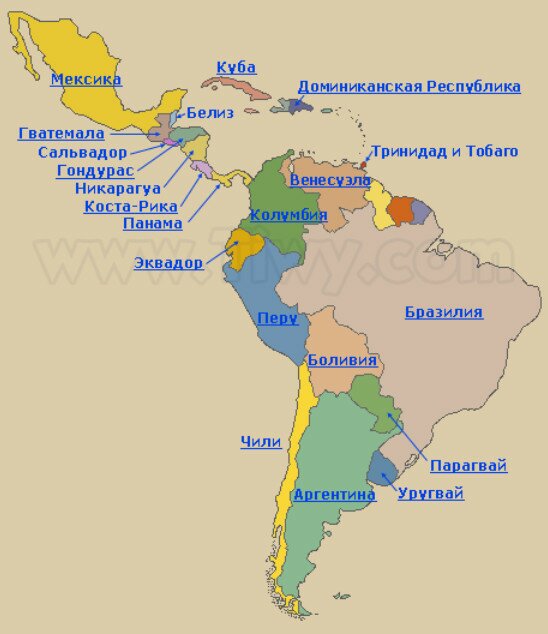
Part 2. Development of the Situation in Some Regions of the World in 2014
2.1 America
In 2014, the efforts of the American leadership were directed, first of all, to preserving and strengthening the role of the United States as the leading center of power in the world. On this basis, the US government has sought primarily to solve economic problems of the state, to ensure its security and to strengthen the USA’s positions in key regions of the world, particularly in the Asia-Pacific Region (APR), Europe and the Middle East. In the past year, the positive dynamics of the US economy resumed and began to overcome the state of prolonged recession. This gave Washington an opportunity to intensify its efforts to achieve political and economic objectives of its strategy.
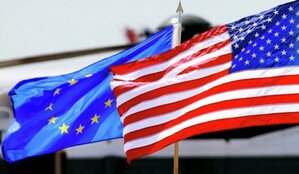
|
|
With the annexation of the Crimea and further Russian aggression against Ukraine, the USA's foreign policy began to change. Washington had switched its main attention onto the European region. It was the United States who became the main initiator and driving force behind the actions of Western countries and international organizations on strategic containment of Russia, strengthening European security and supporting Ukraine. The Republican Party of the USA's getting majority in the US Congress in elections in November 2014 may with the course of time further strengthen this policy. This is evidenced by the adoption by Congress in December of the “Ukraine Freedom Support Act”, providing for possibility of imposing additional sanctions against Russia, as well as providing Ukraine with financial and military-technical assistance.
In 2014, a new impetus to the relations between the USA and the EU was given within the framework of the negotiations on a free trade area. This will create the most powerful in the world trade organization, as well as compensate for the European Union's losses from reducing the volume of trade with Russia. Besides, a separate area of cooperation between the USA and the EU has become the parties' close coordination and harmonization of measures to contain Russia.
At the same time, the USA has sought to deepen relations and to resolve disputes with China. Important in this regard was The US President Barack Obama's official visit to Beijing in November to participate in the Summit of APEC (Asia-Pacific Economic Cooperation) and the bilateral talks with President Xi Jinping. The parties have taken unprecedented steps to resolve bilateral relations in the Asia-Pacific region. During the talks, they signed a number of agreements in the sphere of military security, allowing the US and China to strengthen mutual trust and to build a “new type of military relations” between the states. The parties also agreed on many positions in trade, economic and investment spheres, in the struggle against global warming.
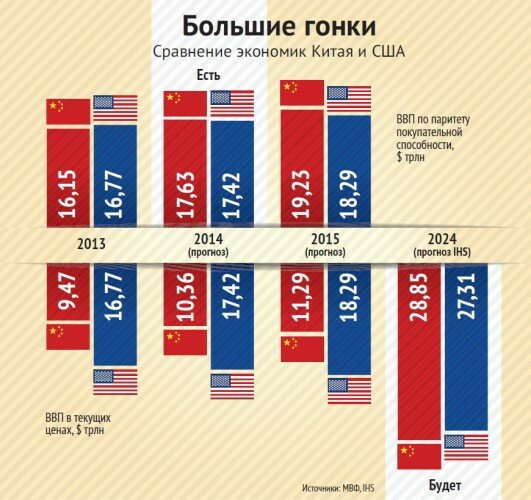 The USA had been paying special attention to cooperation with India (the leading country in South-East Asia), as well as with Japan, Australia and South Korea (major US partners in the Asia-Pacific Region). The priority directions of the United States' foreign activity remained stabilization of the situation in Afghanistan and Iraq, pressure on B. al-Assad's regime in Syria, struggle against the terrorist organization “Islamic State”, blocking the development of Iran and North Korea's nuclear programs. In turn, this forced the USA to continue some cooperation with Russia and to agree to compromise on certain issues.
The USA had been paying special attention to cooperation with India (the leading country in South-East Asia), as well as with Japan, Australia and South Korea (major US partners in the Asia-Pacific Region). The priority directions of the United States' foreign activity remained stabilization of the situation in Afghanistan and Iraq, pressure on B. al-Assad's regime in Syria, struggle against the terrorist organization “Islamic State”, blocking the development of Iran and North Korea's nuclear programs. In turn, this forced the USA to continue some cooperation with Russia and to agree to compromise on certain issues.
|
|
The US economy in 2014 demonstrated record growth over the past 11 years. The GDP at the end of the third quarter had increased by 5 % on an annualized basis, and by the results of year it may grow by 2.3-2.4 %, due to the activity of consumers, growth of the authorities' at various levels spending and balanced monetary policy of the Federal Reserve System. Consumers had got support through lower fuel prices and reduction of unemployment (in 2014 2.65 million new jobs were created). As a result, the budget deficit has been reduced, inflation has declined, and the stock market has been intensified.
 Summing up the year, the US president called the outgoing year “breakthrough” for America, despite its having been overshadowed by “some crises”. B. Obama pointed out the positive dynamics of the US economy and the labor market, the role of the US in a number of conflicts, including in struggle against the “Islamic State” grouping, confrontation with Russia over Ukraine, fighting Ebola virus, and announced changes in US-Cuban relations.
Summing up the year, the US president called the outgoing year “breakthrough” for America, despite its having been overshadowed by “some crises”. B. Obama pointed out the positive dynamics of the US economy and the labor market, the role of the US in a number of conflicts, including in struggle against the “Islamic State” grouping, confrontation with Russia over Ukraine, fighting Ebola virus, and announced changes in US-Cuban relations.
In 2014, build-up of US military presence in Central and Eastern Europe continued, including the deployment of a Missile Defense system, placing the US Air Force units in Poland and the Baltic States. At the same time, at the end of the year the US officially announced the end of the military Operation Enduring Freedom in Afghanistan (which had lasted since 2001) and the withdrawal of the main contingent of its troops. At the same time, it became known about the beginning in early 2015 of a new US mission in the country — Operation Freedom's Sentinel, which will focus primarily on training, advice and assistance to Afghanistan's Security Forces and Army.
2.2 Europe
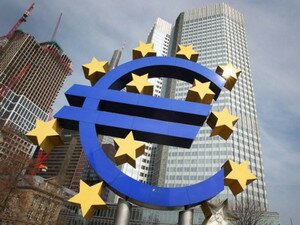
|
|
The overall situation in the European Union was characterized by weakening of Euro-integration aspirations. Continuing in a number of EU Member States financial and economic crisis has caused a rise in unemployment, accompanied by intensification of Euro-skeptical and far-right sentiments, as well as of radical extremist movements among Europeans.
The past year was marked in the EU by the elections to European institutions and formation of the new composition of the European Commission. The newly elected European Parliament (EPP and the Progressive Alliance of Socialists and Democrats gained most seats) elected D. Tusk President of the European Council and the new composition of the European Commission, headed by J.-C. Juncker. The main tasks of the new composition of the European Commission will be seeking more effective ways to solve European problems such as reducing dependence on Russian energy resources, development of additional measures to create jobs and ensuring sustainable economic growth in the EU Member States. These problems will have to be solved in the situation where a significant number of European countries oppose the initiatives of the EU institutions or ignore them.
On the foreign policy direction, the EU is trying to intensify activities aimed at consolidating its leading role in dealing with pressing international issues in spheres of its strategic interests — in countries-participants of “Eastern Partnership” (especially in Ukraine, Georgia and Moldova), “Mediterranean Union” (first of all in Tunisia, Libya and Egypt) and the Middle East (Syria, Iraq and Palestine), as well as in dealing with the Iranian nuclear issue.
|
|
At the same time, the situation in Ukraine did affect the activity of the European Union in 2014. The EU leadership took an active part in solving the internal political conflict in Ukraine at the beginning of the year, in containing the Russian military aggression against Ukraine, together with the United States it pursued a policy of sanctions against Russia, as well as measures to support Ukraine. This policy was supported by the majority of European countries, and the most active position on these issues is that of Germany, Britain, France, Poland and Lithuania. However, some EU countries and European politicians showed a more cautious attitude to measures of pressure on Russia. In particular, Italy, Hungary, Bulgaria and Slovakia (which are more economy-and energy-wise dependent on Russia) not always supported the EU leadership in these questions.
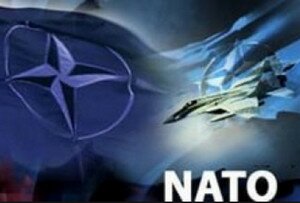 The situation around Ukraine made the EU strengthen measures to increase, primarily military and energy security of Europe. In the military sphere, it was agreed to deepen cooperation between the EU and NATO on countering military threats to the European region, and a new Development Plan for the EU's Defense Capabilities in the years 2015-2018 was developed. The main issue of the European energy security was reducing the EU Member-States' dependence on Russian natural gas. A European Energy Union is going to be created, whose main task will be coordination of purchases of natural gas and unification of its price for all EU countries. Besides, the EU's efforts were aimed at accelerating creation of a “Southern Energy Corridor”, construction of terminals for liquefied natural gas, increasing the countries' own gas production, transition to the use of alternative energy sources, as well as uniting energy networks of European countries.
The situation around Ukraine made the EU strengthen measures to increase, primarily military and energy security of Europe. In the military sphere, it was agreed to deepen cooperation between the EU and NATO on countering military threats to the European region, and a new Development Plan for the EU's Defense Capabilities in the years 2015-2018 was developed. The main issue of the European energy security was reducing the EU Member-States' dependence on Russian natural gas. A European Energy Union is going to be created, whose main task will be coordination of purchases of natural gas and unification of its price for all EU countries. Besides, the EU's efforts were aimed at accelerating creation of a “Southern Energy Corridor”, construction of terminals for liquefied natural gas, increasing the countries' own gas production, transition to the use of alternative energy sources, as well as uniting energy networks of European countries.
Against the general background of economic downturn of the Euro- zone (which includes 18 of the 28 EU countries), issues of solving of financial and economic problems of the EU and questions of ensuring sustainable development of the economies of the Member States, were the focus of attention of the leadership of the European Commission. In this regard, in November 2014 the European Commission published a new investment program aimed at sustainable growth of the European economy, creation of 1.3 million new jobs, as well as accumulation on the accounts of joint European funds of more than 300 billion US dollars over the next two years. At the same time, last year, the leading European economies showed growth. For example, in Germany for the year the GDP growth is projected by 1.4 % (in 2013 — by 0.4 %), in the UK — by 2.8 % (although it was planned by 3 %). In general, the European Commission, at the end of the year, lowered the forecast of GDP growth in the European Union from 1.6 % to 1.3 %, and the growth of the economy of Euro-zone — from 1.2 % to 0.8 %. The main reasons for stifling economic growth are the general economic downturn in the Euro-zone (weak trade indexes, falling exports, declining investments, rising inflation), as well as the consequences of the Russian-Ukrainian confrontation. Based on this, the EU should carry out comprehensive structural reforms to improve fiscal policy and to attract investments into the economy (both public and private).
2.3 Post-Soviet territories
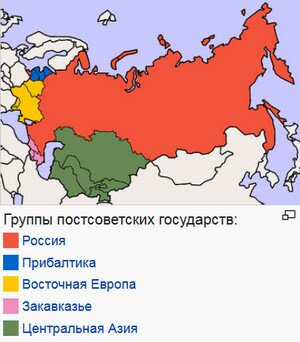 The economic slowdown in the countries of the former Soviet Union in the past year took place against the background of the deteriorating economic situation in the Russian Federation. Western sanctions and the fall in world oil prices (by 50 % over the past six months) have caused significant losses of the Russian economy, strengthening the crisis tendencies of its development — economic slowdown, reduced investments, Russian companies' limiting access to foreign financial markets, accelerating capital outflows (more than 150 billion US dollars by the results of 2014), decline in imports, cutting of trade relations with key partners, decrease in real incomes and accelerating inflation, worsening of the socio-economic situation in the country. As a result, the Kremlin will have in the nearest future to revise the main indicators of the oil sector and fiscal policy for 2015. So, Western sanctions and conjuncture in the world oil market are gradually drawing the Russian economy into a phase of a systemic crisis. At this, the greatest risks remain in the financial and banking sector, oil industry and agrarian sector of the Russian economy, while the rapid devaluation of the ruble by 50 % has led to an almost complete collapse of the Russian tourism industry.
The economic slowdown in the countries of the former Soviet Union in the past year took place against the background of the deteriorating economic situation in the Russian Federation. Western sanctions and the fall in world oil prices (by 50 % over the past six months) have caused significant losses of the Russian economy, strengthening the crisis tendencies of its development — economic slowdown, reduced investments, Russian companies' limiting access to foreign financial markets, accelerating capital outflows (more than 150 billion US dollars by the results of 2014), decline in imports, cutting of trade relations with key partners, decrease in real incomes and accelerating inflation, worsening of the socio-economic situation in the country. As a result, the Kremlin will have in the nearest future to revise the main indicators of the oil sector and fiscal policy for 2015. So, Western sanctions and conjuncture in the world oil market are gradually drawing the Russian economy into a phase of a systemic crisis. At this, the greatest risks remain in the financial and banking sector, oil industry and agrarian sector of the Russian economy, while the rapid devaluation of the ruble by 50 % has led to an almost complete collapse of the Russian tourism industry.
|
|
Last year, the Russian Federation significantly strengthened its influence in countries of the former Soviet Union, realizing its strategy for restoring its role of a “major world leader”. The annexation of the Crimea and the military aggression against Ukraine exacerbated the confrontation with the USA and NATO, which made Russia face the need to strengthen the integration structures in the post-Soviet space. This is especially true of the Customs Union (CU) and the Collective Security Treaty Organization (CSTO), as components of the strategic plan for establishment of the Russian Eurasian Union (EAEU). Thus, Russia has made a number of formal “successes” in the implementation of its integration initiatives, including to expand and develop the CU due to the accession of Armenia, implementation of the project of transformation of the CU into EAEU from 1 January 2015, and Kyrgyzstan's signing of the agreement on its joining the EAEU. Besides, there was announced Tajikistan's possible accession to the Union and intentions of more than 40 other countries to establish close cooperation with the Organization in the trade and economic sphere. However, the Russian aggression against Ukraine significantly strengthened disagreements between the countries of the former USSR. The real situation in the CU and EAEU last year was determined largely by negative trends.
|
|
The reason for this was the growth of financial and economic problems in Russia, which also had a negative impact on the economies of its partners and led to the continued trend of stagnation of trade and economic relations within the Customs Union and the EAEU. During 2014 there was a further decrease in the volume of mutual trade between the member countries of the Customs Union (by 25-30 %).
In the most difficult situation was Belarus, whose economy is mainly focused on the Russian market. Besides, the devaluation of the Russian ruble caused devaluation of the Belarusian and Kazakh national currencies. Countries such as Armenia, Uzbekistan, Kyrgyzstan, Tajikistan and Moldova are most affected by the decline in volumes of remittances from migrants working in Russia.
These problems were exacerbated by Moscow's steps to close its markets for Belarusian and Kazakh goods as a means of pressure on them in political and economic issues (including to force Belarus and Kazakhstan to support Russian counter-sanctions against the US and the EU). Belarus's restarting (in response to Russia's restrictions) work of customs posts on the border with Russia negates the whole purpose of creation of the Customs Union. Apart from this, at least until 2025 is expected further preservation of a number of exceptions and limitations in mutual trade of member countries of the CU and EAEU, which actually negates the very idea of their creation. Such limitations and exceptions concern, first of all, oil and gas, which is an extremely sensitive issue for Belarus and Kazakhstan, and allows Moscow to use the energy factor to put pressure on Minsk and Astana.
These circumstances have increased negative attitude to Russian integration initiatives on the part of leadership, business circles and population of current and potential participants of the CU and the EAEU. In contrast to this, has deepened cooperation of a number of post-Soviet states with other countries and international organizations, first, with the EU countries and China. An example of this trend was the increase in the volume of Belarus and Kazakhstan's trade with these countries, conclusion of negotiations between Kazakhstan and the EU on the draft Agreement on expansion of partnership and cooperation between the parties and so on.
In the context of the escalating confrontation with the US and NATO, Russia was paying special attention to strengthening of the Collective Security Treaty Organization. In this regard, within the framework of positioning the CSTO as a “counterweight” to NATO, the Russian leadership has been developing the military component of the Organization, has consolidated its members, as well as involved them in support of its steps against Ukraine. Besides, the priorities of the CSTO were countering “color revolutions” in former Soviet territories, as well as ensuring security in Central Asia. At the same time, the activity of the CSTO has actually demonstrated that practical participation in the activities of military nature of the member countries is limited, as the full application of national military contingents outside of their regions seems not possible. Besides, the CSTO member countries (including Central Asian countries and the RF's closest allies — Belarus and Kazakhstan) did not support Russia in its actions against Ukraine or chose to take a neutral position on this issue.
Along with attempts to strengthen the post-Soviet Russian integration associations, Russia continued to put pressure on Moldova and Georgia in order to counteract their European integration. The main forms of such pressures were: supporting the pro-Russian opposition in Moldova, provoking tension around Trans-Dniester and attempts to create new conflicts on the territory of Moldova (in particular, in Gagauzia); providing assistance to the separatist regimes in Abkhazia and South Ossetia, creation of preconditions for the de facto annexation of Abkhazia within the framework of the Agreement “On Cooperation and Strategic Partnership” between Russia and Abkhazia. A similar agreement will be signed also with South Ossetia. However, Russia has been actively using economic leverage in Moldova and Georgia, limiting the access of their products to the Russian market. However, this has actually failed, as shows the victory of pro-European forces in the parliamentary elections in Moldova in November 2014, and the immutability of Georgia's foreign policy, despite its internal problems.
In the Caucasus, the Nagornyi-Karabakh conflict between Armenia and Azerbaijan remains frozen. In 2014, it nearly broke out again. The situation in the zone of the conflict got worse last summer and as a result — military servicemen on both sides were killed. Also in early November, Mi-24 was shot down in Nagornyi-Karabakh. But so far this sharpening has not resulted in a new round of war. In August, in Sochi was held a meeting of the Presidents of Russia, Armenia and Azerbaijan on the problem of the conflict. It was agreed that the conflict can only be resolved peacefully.
Besides, the situation in the former Soviet Union in 2014 was affected by terrorist activity in the North Caucasus region. Serious threat of Islamic extremism looms over Central Asian countries (due to the withdrawal of ISAF International Forces from Afghanistan) and the North Caucasus (participation of militants of the “Islamic State” and mercenaries from the North Caucasus on the side of the terrorist DPR/LPR). Additional factors of influence on the development of the political situation in the countries of the former Soviet Union are the forthcoming presidential elections in Belarus and Uzbekistan, and parliamentary ones — in Tajikistan and Kyrgyzstan.
2.4 Middle East and North Africa
 In the past year in the Middle East there was a complicated (and in some countries unstable) situation. The hard-armed confrontation between government supporters and militants of various anti-regime groups in Syria, Iraq and Libya continued.
In the past year in the Middle East there was a complicated (and in some countries unstable) situation. The hard-armed confrontation between government supporters and militants of various anti-regime groups in Syria, Iraq and Libya continued.
|
|
In 2014, a new state formation — “Islamic State” — appeared on the map of the world. The radical group IS which appeared in the middle of the past decade, in the summer of 2014 within a few weeks captured several major cities in the east of Syria, in the north and west of Iraq. The “Islamic State” is trying to create an Islamic “caliphate” on controlled territories. It has an organized hierarchical structure, permanent access to modern weapons and equipment, and an annual budget of more than 2 billion US dollars. The grouping is constantly committing war crimes and adheres to a policy of outright terror, especially in the territories under its control, and in some cases — in other regions. The distinguishing feature of this grouping is massacres of captives, captured journalists and representatives of religious and ethnic minorities. Between the “IS” and other radical Islamic Jihad movements there are few ideological differences, but in terms of geographic presence, it has become a reality on the map of the world. I.e., there has appeared a phenomenon — the Islamist movement, acting as a regional state. So far, however, it is not clear whether this formation is viable, but the precedent has been created. The “IS” has caused geopolitical, economic and social chaos at global and regional levels, and many countries in the region are forced to adapt their policies to this new reality. Against the “IS” is international coalition — the United States, together with Bahrain, Jordan, Qatar, Saudi Arabia and the United Arab Emirates. Allies apply mainly air strikes: since August 8, the positions of militants in Iraq have been suffered more than 800 strikes, on the occupied territories in Syria — more than 550. However, the campaign against the “IS” may last for more than one year.
Unstable was also the situation in Egypt, Lebanon, Yemen, and Afghanistan and in the north-west of Pakistan.
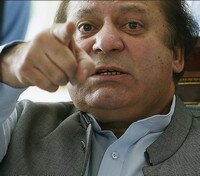 In late 2014, Pakistan stepped up its anti-terror struggle. Thus, Prime Minister N. Sharif said that a large-scale anti-terrorist operation “Smashing blow” being carried out by government troops in the area of Pashtun tribes along the border with Afghanistan (the so-called “Durand Line”), will be expanded, and its new phase is aimed at the destruction of extremists hiding in rural and urban districts. N. Sharif stressed: “We will not make a difference between terrorists and those who help them. Both should be eliminated. It is time to completely eradicate extremism in our country”. So the year 2015 promises to be hot...
In late 2014, Pakistan stepped up its anti-terror struggle. Thus, Prime Minister N. Sharif said that a large-scale anti-terrorist operation “Smashing blow” being carried out by government troops in the area of Pashtun tribes along the border with Afghanistan (the so-called “Durand Line”), will be expanded, and its new phase is aimed at the destruction of extremists hiding in rural and urban districts. N. Sharif stressed: “We will not make a difference between terrorists and those who help them. Both should be eliminated. It is time to completely eradicate extremism in our country”. So the year 2015 promises to be hot...
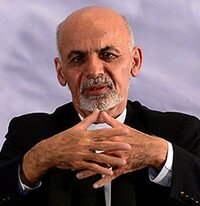 December 28 ended the USA and NATO's mission to promote security in Afghanistan. Now 350 thousand Afghan military servicemen and policemen will be in charge of security in the country. However, under the terms of the agreement between the US and Afghanistan, the Americans have reserved the right, in case of need, to take measures against extremists in the country, while the rest of the Western states can now only train local troops.
December 28 ended the USA and NATO's mission to promote security in Afghanistan. Now 350 thousand Afghan military servicemen and policemen will be in charge of security in the country. However, under the terms of the agreement between the US and Afghanistan, the Americans have reserved the right, in case of need, to take measures against extremists in the country, while the rest of the Western states can now only train local troops.
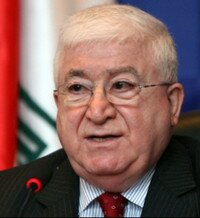 When in 2011 the United States were leaving Iraq, they believed that Baghdad would provide the balance of power in the country, including by providing a number of regions with some autonomy (formal or informal). But the emergence of the “Islamic State” has rapidly and radically changed the balance of power in Iraq, which ultimately has forced Washington to intervene again. It was decided to send into the combat zone combat aircrafts to attack the positions of the Islamists, as well as some ground troops, on the basis of which can be created the backbone of the regional coalition to fight the “IS”.
When in 2011 the United States were leaving Iraq, they believed that Baghdad would provide the balance of power in the country, including by providing a number of regions with some autonomy (formal or informal). But the emergence of the “Islamic State” has rapidly and radically changed the balance of power in Iraq, which ultimately has forced Washington to intervene again. It was decided to send into the combat zone combat aircrafts to attack the positions of the Islamists, as well as some ground troops, on the basis of which can be created the backbone of the regional coalition to fight the “IS”.
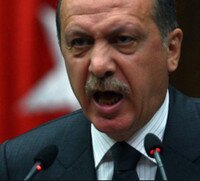 To date, the key player in the coalition is Turkey, which has become a real regional power. It has a large economy and strong Armed Forces. Ankara's strategy under President R. Erdogan is to avoid conflicts with its neighbors. However, the United States believes that Turkey should send its Armed Forces (primarily the Army) to fight the “IS”. Ankara should be interested in this — otherwise the conflict in Iraq will spread to the Turkish territory. The Turkish government stubbornly kept the Syrian conflict inside the SAR, limiting its direct involvement in the Syrian civil war. Now, Ankara is in the situation where it is threatened by the “IS”' pressure on the Iraqi Kurds, which eventually will spread to Turkish Kurds, who are nearly a third of the Turkish population. Therefore, Turkey is in a rather difficult situation — if it interferes with its Armed Forces in the war against the “Islamic State”, its Army for the first time since the Korean War will have to really and fully fight. In this scenario, the risks are real, and the victory may prove illusory. It should also be noted that on December 25 R. Erdogan declared victory over F. Gulen's opposition movement (Islamic social activist who lives in the USA), stressing that the fight against illegal structures would continue. The President again called upon F. Gulen not to interfere in the internal affairs of Turkey and accused the USA of supporting him.
To date, the key player in the coalition is Turkey, which has become a real regional power. It has a large economy and strong Armed Forces. Ankara's strategy under President R. Erdogan is to avoid conflicts with its neighbors. However, the United States believes that Turkey should send its Armed Forces (primarily the Army) to fight the “IS”. Ankara should be interested in this — otherwise the conflict in Iraq will spread to the Turkish territory. The Turkish government stubbornly kept the Syrian conflict inside the SAR, limiting its direct involvement in the Syrian civil war. Now, Ankara is in the situation where it is threatened by the “IS”' pressure on the Iraqi Kurds, which eventually will spread to Turkish Kurds, who are nearly a third of the Turkish population. Therefore, Turkey is in a rather difficult situation — if it interferes with its Armed Forces in the war against the “Islamic State”, its Army for the first time since the Korean War will have to really and fully fight. In this scenario, the risks are real, and the victory may prove illusory. It should also be noted that on December 25 R. Erdogan declared victory over F. Gulen's opposition movement (Islamic social activist who lives in the USA), stressing that the fight against illegal structures would continue. The President again called upon F. Gulen not to interfere in the internal affairs of Turkey and accused the USA of supporting him.

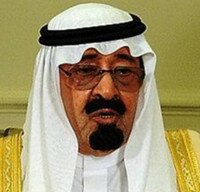 December 25, in Saudi Arabia was published the draft budget for 2015. In the situation of a sharp drop in global oil prices, this budget, for the first time in recent years, expects a large deficit of nearly 31.6 billion Euros. Despite the expected deficit, the government increases public spending, which has been welcomed by investors. This Saudi Arabia's step has shown that it could live without upheavals through the period of low energy resources prices.
December 25, in Saudi Arabia was published the draft budget for 2015. In the situation of a sharp drop in global oil prices, this budget, for the first time in recent years, expects a large deficit of nearly 31.6 billion Euros. Despite the expected deficit, the government increases public spending, which has been welcomed by investors. This Saudi Arabia's step has shown that it could live without upheavals through the period of low energy resources prices.
[Saudi King Abdullah bin Abdul-Aziz Al Saud died Jan.23 at the age of 90. Salman bin Abdul Aziz has taken Saudi throne after his died].
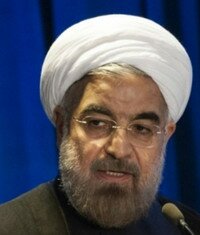 In this regard, we can't help mentioning Iran. Tehran stands for pro-Iranian (with Shia-dominated) regime in Baghdad, which is very important for observing its interests and for the Iranian policy of insuring national security. From the point of view of Tehran, the “Islamic State” has the ability to deliver a powerful blow to the government in Baghdad and potentially complicate Iran's positions in Iraq. Although this is so far only a potential threat. It should also be noted that negotiations of the “Six” of international mediators with Iran have not led to a final agreement on the Iranian nuclear program. And a new term was extended for another seven months. The fact which a year ago would have caused a wave of criticism and threats against Iran, this time has not caused any complications. Moreover, Washington is not in favor of introduction of new economic sanctions prepared by the Congress against Iran. This new reality is not a change in the relationship between the United States and Iran, but rather reflects the new powerful geopolitical changes observed throughout the Middle East and overshadowing the urgency of the decision on Iran.
In this regard, we can't help mentioning Iran. Tehran stands for pro-Iranian (with Shia-dominated) regime in Baghdad, which is very important for observing its interests and for the Iranian policy of insuring national security. From the point of view of Tehran, the “Islamic State” has the ability to deliver a powerful blow to the government in Baghdad and potentially complicate Iran's positions in Iraq. Although this is so far only a potential threat. It should also be noted that negotiations of the “Six” of international mediators with Iran have not led to a final agreement on the Iranian nuclear program. And a new term was extended for another seven months. The fact which a year ago would have caused a wave of criticism and threats against Iran, this time has not caused any complications. Moreover, Washington is not in favor of introduction of new economic sanctions prepared by the Congress against Iran. This new reality is not a change in the relationship between the United States and Iran, but rather reflects the new powerful geopolitical changes observed throughout the Middle East and overshadowing the urgency of the decision on Iran.
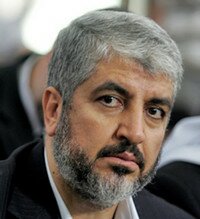
 In the middle of the year, the already difficult relations between Israel and the Palestinian Authority deteriorated sharply. After Israel had arrested several members of the Palestinian group Hamas (in response to the kidnapping and murder of Israeli teenagers) and a Palestinian teenager had been killed by Jewish religious extremists from the Gaza Strip, there began missile attacks on Israeli towns (about 4.5 thousand missiles and mortar shells were fired). Israel in July and August in response conducted a major military operation “Enduring Rock”. The Israeli military operation included air strikes on targets in the Gaza Strip and actions of the Army (more than 5 thousand targets were attacked). In August, with great difficulty, with the mediation of Egypt, the parties managed to agree on a ceasefire. The conflict had killed 69 Israelis (more than 800 were wounded), and more than 2 thousand Palestinians (more than 10 thousand were wounded). The weakened Hamas has kept control of the Gaza Strip, but turned out to be highly dependent on the Palestinian Administration in Ramallah.
In the middle of the year, the already difficult relations between Israel and the Palestinian Authority deteriorated sharply. After Israel had arrested several members of the Palestinian group Hamas (in response to the kidnapping and murder of Israeli teenagers) and a Palestinian teenager had been killed by Jewish religious extremists from the Gaza Strip, there began missile attacks on Israeli towns (about 4.5 thousand missiles and mortar shells were fired). Israel in July and August in response conducted a major military operation “Enduring Rock”. The Israeli military operation included air strikes on targets in the Gaza Strip and actions of the Army (more than 5 thousand targets were attacked). In August, with great difficulty, with the mediation of Egypt, the parties managed to agree on a ceasefire. The conflict had killed 69 Israelis (more than 800 were wounded), and more than 2 thousand Palestinians (more than 10 thousand were wounded). The weakened Hamas has kept control of the Gaza Strip, but turned out to be highly dependent on the Palestinian Administration in Ramallah.
2.5 Latin America and the Caribbean
|
|
In 2014, the situation in Latin America and the Caribbean (CELAC), first of all depended on the “USA-China” confrontation in the region. In recent years, the US influence on the CELAC countries has declined significantly, independence of Latin American countries has grown, and China is trying to take the place of the main trading partner in Latin America. World leaders (Washington relatively openly, and Beijing in a more veiled way) seek to implement the strategy of “separate” enticement of the CELAC countries into the camp of their allies. This is due to both traditional ideological commitment of CELAC (populist regimes in several countries of the so-called “Left drift” and historically pro-American states), and the presence of a number of “frozen” regional conflicts. At this, the potential for conflict is used by the USA and China to reduce the monolithic position of certain Latin American integration associations in the political and security or trade-economic spheres.
Cooperation of the world's leaders with countries in the CELAC region
 The USA's foreign policy's growing attention to Latin American direction shows historical approaches of the White House to building relations with the countries of the region in order to restore the influence in the Western Hemisphere with simultaneous weakening of China and other global players (Russia, the EU, India). To this end, the White House, among other things, is implementing the so-called “Pulling-Out Strategy,” according to which the USA is trying to focus on working with individual, “most sensitive” left-wing governments in the region. Besides, the Organization of American States continues playing an important for the USA role. Washington sees it as the main means of influencing the development of the situation in CELAC. These efforts include a reset in relations with “problem” states (especially with Venezuela and Cuba) while deepening the dialogue with traditional partners from among the regional leaders (Brazil and Argentina).
The USA's foreign policy's growing attention to Latin American direction shows historical approaches of the White House to building relations with the countries of the region in order to restore the influence in the Western Hemisphere with simultaneous weakening of China and other global players (Russia, the EU, India). To this end, the White House, among other things, is implementing the so-called “Pulling-Out Strategy,” according to which the USA is trying to focus on working with individual, “most sensitive” left-wing governments in the region. Besides, the Organization of American States continues playing an important for the USA role. Washington sees it as the main means of influencing the development of the situation in CELAC. These efforts include a reset in relations with “problem” states (especially with Venezuela and Cuba) while deepening the dialogue with traditional partners from among the regional leaders (Brazil and Argentina).
 An evidence of the successful implementation of this policy is the leaders of Cuba and the United States Barack Obama and Raul Castro's historic statement of 17 December 2014 on the restoration of diplomatic relations between the two countries. In the unprecedented statement about the change of the political course, President of the United States recognized that the isolation of Cuba by the United States (continued since 1961) has demonstrated its complete ineffectiveness. Now US banks may open branches in Cuba and US citizens will be able to send remittances (for up to 2 thousand US dollars) to the island. Will be also allowed exports to Cuba of telecommunications equipment, and measures will be taken to expand trade. Private Cuban companies will be able to buy American building materials and agricultural equipment.
An evidence of the successful implementation of this policy is the leaders of Cuba and the United States Barack Obama and Raul Castro's historic statement of 17 December 2014 on the restoration of diplomatic relations between the two countries. In the unprecedented statement about the change of the political course, President of the United States recognized that the isolation of Cuba by the United States (continued since 1961) has demonstrated its complete ineffectiveness. Now US banks may open branches in Cuba and US citizens will be able to send remittances (for up to 2 thousand US dollars) to the island. Will be also allowed exports to Cuba of telecommunications equipment, and measures will be taken to expand trade. Private Cuban companies will be able to buy American building materials and agricultural equipment.
For China, the development of political and economic contacts with the countries of CELAC is part of the renewed foreign policy strategy aimed at achieving the status of a global state. The main goal of China in Latin America is access to natural resources in the region, expansion of markets for Chinese goods, creation of a network of the PRC's “friends and allies” in the international arena. Last year the leader of the PRC Xi Jinping promised to invest into countries of Latin America 250 billion US dollars by 2020 and announced the possibility of doubling in the next decade of the volume of trade with the region in order to bring it up to more than 500 billion US dollars. The Economic Commission for CELAC (CEPAL) predicts that Beijing in the nearest future will not be able to replace the USA as the main economic partner for the developing countries of Latin America. However, in 2015, China has to oust the EU and to become second only to the USA investor in the region. Now China is the main trading partner of Brazil, Chile and Peru, and ranks second in terms of imports from Argentina, Costa Rica and Cuba.

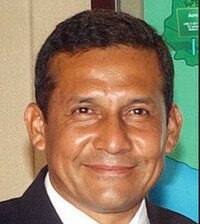 However, the leaderships of a number of Latin American countries perceives China not only as a key investor, strong economic partner and a counterweight to Washington's influence, but also as a political and economic rival. Against this background, is not excluded a possibility of conflicts caused by the desire of a number of industrial lobbies of CELAC countries (Mexico, Brazil and some Central American countries) to obstruct the expansion of Chinese economic presence, which, in its turn, will result in China's more active influence on political life in Latin American countries.
However, the leaderships of a number of Latin American countries perceives China not only as a key investor, strong economic partner and a counterweight to Washington's influence, but also as a political and economic rival. Against this background, is not excluded a possibility of conflicts caused by the desire of a number of industrial lobbies of CELAC countries (Mexico, Brazil and some Central American countries) to obstruct the expansion of Chinese economic presence, which, in its turn, will result in China's more active influence on political life in Latin American countries.
In 2014, intensity of political and economic contacts between Russia and countries of Central and South America grew. Particular attention was paid to the development of cooperation with members of ALBA (Cuba, Venezuela, Bolivia, Ecuador, Nicaragua, Dominica, Antigua and Barbuda, Saint Vincent and the Grenadines, and Saint Lucia). At this, the key directions of development of Russia's relations with the countries of CELAC were military and military-technical cooperation, as well as investment and energy spheres. Besides, taking into consideration the restrictions on imports of agricultural products from Western countries, Russia shows interest in the supply of the Latin American pork, beef, poultry, dairy products, fruits and vegetables.
Development of the situation in the CELAC region
In their turn, Latin American countries have tried to participate more actively in world politics as independent players. A special role in this process was played by the most powerful country in Latin America — Brazil, claiming to be a permanent member of the UN Security Council and representing the region in the “BRICS”. Besides, three Latin American countries (Argentina, Brazil, and Mexico) are members of the “Big Twenty”. Latin American countries also have two seats among the non-permanent members of the UN Security Council.
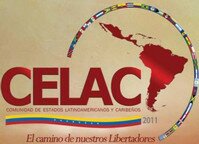 On the other hand, one of the key trends in the development of the region has become a significant slowdown in the integration processes within the framework of both political, and trade and economic associations. In particular, in recent years has decreased the pace of integration in two key and competing regional projects in the political sphere — the Community of Latin American and Caribbean States (CELAC) and the Union of South American Nations (UNASUR). The CELAC emerged as an alternative to the Organization of American States, which traditionally are under Washington's influence. The main reason for slowdown of this bloc is the inability to unite multi-vector political interests of its members, as the bloc consists of both states of “left drift” (Venezuela, Cuba, Bolivia), and countries traditionally oriented to the United States (Colombia, Mexico, Chile) or trying to become independent global players (Brazil).
On the other hand, one of the key trends in the development of the region has become a significant slowdown in the integration processes within the framework of both political, and trade and economic associations. In particular, in recent years has decreased the pace of integration in two key and competing regional projects in the political sphere — the Community of Latin American and Caribbean States (CELAC) and the Union of South American Nations (UNASUR). The CELAC emerged as an alternative to the Organization of American States, which traditionally are under Washington's influence. The main reason for slowdown of this bloc is the inability to unite multi-vector political interests of its members, as the bloc consists of both states of “left drift” (Venezuela, Cuba, Bolivia), and countries traditionally oriented to the United States (Colombia, Mexico, Chile) or trying to become independent global players (Brazil).
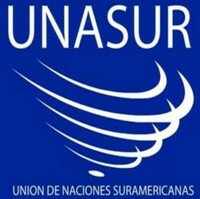 The UNASUR, despite its ambitious plans (to create a number of supra-national institutions and security structures), today is just a forum for political dialogue on the issues of free trade zones, protection of the environment, cultural and humanitarian cooperation. At the same time, influential members of UNASUR tend to avoid controversial issues in the sphere of defense, border delimitation, including exclusive economic zones, energy, finance, cybercrime and so on.
The UNASUR, despite its ambitious plans (to create a number of supra-national institutions and security structures), today is just a forum for political dialogue on the issues of free trade zones, protection of the environment, cultural and humanitarian cooperation. At the same time, influential members of UNASUR tend to avoid controversial issues in the sphere of defense, border delimitation, including exclusive economic zones, energy, finance, cybercrime and so on.
 Also has significantly fallen the level of integration interaction within the framework of key economic and trade associations of South America — Southern Cone Common Market (MERCOSUR) and the Bolivarian Alliance for the Peoples of Our America (ALBA). Aggravation of contradictions in Argentina's trade with Brazil and Chile has actually made it impossible to develop a unified approach to the strategy of further development of MERCOSUR. The question of Paraguay's re-gaining the membership (was suspended in 2012) in the Association also remains uncertain. The internal conflict of the MERCOSUR's leaders (Argentina and Brazil) with other members, especially Paraguay and Uruguay, also has a destructive effect on the prospects of its development.
Also has significantly fallen the level of integration interaction within the framework of key economic and trade associations of South America — Southern Cone Common Market (MERCOSUR) and the Bolivarian Alliance for the Peoples of Our America (ALBA). Aggravation of contradictions in Argentina's trade with Brazil and Chile has actually made it impossible to develop a unified approach to the strategy of further development of MERCOSUR. The question of Paraguay's re-gaining the membership (was suspended in 2012) in the Association also remains uncertain. The internal conflict of the MERCOSUR's leaders (Argentina and Brazil) with other members, especially Paraguay and Uruguay, also has a destructive effect on the prospects of its development.
 At the same time, the key integration project of the “left drift” countries — ALBA (directly dependent on the strength of the radical left regimes in Venezuela, Cuba and Bolivia) also shows a marked inhibition of its development, which is, first of all, due to the limitation of the volume of Venezuela's economic aid to allies due to the deep crisis of its economy. Given the official Caracas' limited economic abilities (which, except for oil at preferential prices, in fact, cannot offer other preferences to its partners in ALBA), the current prospects for the development of this integration association are virtually “zero”.
At the same time, the key integration project of the “left drift” countries — ALBA (directly dependent on the strength of the radical left regimes in Venezuela, Cuba and Bolivia) also shows a marked inhibition of its development, which is, first of all, due to the limitation of the volume of Venezuela's economic aid to allies due to the deep crisis of its economy. Given the official Caracas' limited economic abilities (which, except for oil at preferential prices, in fact, cannot offer other preferences to its partners in ALBA), the current prospects for the development of this integration association are virtually “zero”.
Against this background, the only regional association maintaining the momentum of development remains the Pacific Alliance (Colombia, Mexico, Peru and Chile. In the nearest future, it may be joined by Costa Rica, Panama, Uruguay and Paraguay). Current indicators of the dynamics of the development of the Alliance successfully differ from those of other regional integration associations and create conditions for its transformation into an independent and influential subject of international relations, which will conduct a common foreign, defense and security, trade, monetary and energy policies. However, the main risks for the economies of the Pacific Alliance will be possibility of growth of political instability in Colombia, as well as a too high social orientation of economic policy of the newly elected President of Chile M. Bachelet.
|
|
In 2014 it was possible to observe a slowdown in economic growth in the CELAC countries (up to 0.8 %), which is primarily due to a fall in prices for raw materials on world markets and a number of internal problems of some countries, especially of those with major economies of MERCOSUR (Brazil, Argentina and Venezuela). The socio-economic situation in these countries is characterized by low GDP growth, high inflation, significant problems in the labor market, decrease in foreign trade and investments. At the same time the greatest negative impact on the further development of the region has been caused by the announcement in May 2014 by the Government of Argentina of technical default due to the inability of the country to service its debt obligations. At the same time, the situation in the countries of the Pacific Alliance is characterized by a more dynamic economic growth. In particular, most dynamically are developing economies of Panama, Bolivia, Colombia and Ecuador.
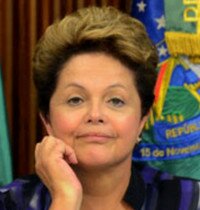 Absolute leader in the region is Brazil. Taking into consideration worsening of the socio-economic situation in the country, it will further increase its lead over other states of CELAC. The current Brazilian leadership is not going to boost regional integration processes, in order not to be the main sponsor of these associations. Therefore, Brazil will count on its transformation into a global player of the world, primarily by ensuring its economic and military leadership at the regional and global levels. In particular, President G. Ruseff's Administration believes that at the present stage it would be more appropriate to focus on situational alliances with approximately equal global players (in the format of “BRICS” or “IBSA Triangular” — India-Brazil-South Africa) and to improve the country's image in the international arena (holding the World Cup last year and the Olympic Games in Rio de Janeiro in 2016, the expansion of cultural influence by turning the Community of Portuguese Language Countries (CPLP)into the instrument of Brazilian “soft power”. Worsening of the economic situation in the country last year due mainly to the decline in industrial production and retail sales, as well as in investors' confidence. The economy is also negatively affected by the weakening of currencies of other partners (Russia, India, and so on). In order to restore the economic growth, D. Rousseff (October 26 was re-elected for a second term) plans to strengthen the control of local government expenditure, to improve financial stability, to reorient the state-owned banks to increase the availability of debt capital for investments into infrastructure.
Absolute leader in the region is Brazil. Taking into consideration worsening of the socio-economic situation in the country, it will further increase its lead over other states of CELAC. The current Brazilian leadership is not going to boost regional integration processes, in order not to be the main sponsor of these associations. Therefore, Brazil will count on its transformation into a global player of the world, primarily by ensuring its economic and military leadership at the regional and global levels. In particular, President G. Ruseff's Administration believes that at the present stage it would be more appropriate to focus on situational alliances with approximately equal global players (in the format of “BRICS” or “IBSA Triangular” — India-Brazil-South Africa) and to improve the country's image in the international arena (holding the World Cup last year and the Olympic Games in Rio de Janeiro in 2016, the expansion of cultural influence by turning the Community of Portuguese Language Countries (CPLP)into the instrument of Brazilian “soft power”. Worsening of the economic situation in the country last year due mainly to the decline in industrial production and retail sales, as well as in investors' confidence. The economy is also negatively affected by the weakening of currencies of other partners (Russia, India, and so on). In order to restore the economic growth, D. Rousseff (October 26 was re-elected for a second term) plans to strengthen the control of local government expenditure, to improve financial stability, to reorient the state-owned banks to increase the availability of debt capital for investments into infrastructure.
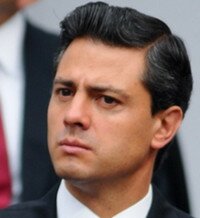 Mexico, having actually abandoned leadership in regional integration processes, is now looking for an effective format of cooperation in the international arena with approximately equal players. In particular, the official Mexico is now especially interested in the project “MINT” (which can potentially be joined by Indonesia, Nigeria and Turkey). In the internal policy, they continue to strengthen the rule of law in some regions. The main problems of Mexico's security in 2014 were as follows: the spread of the activities of local self-defense units, expansion of the illicit seizure (theft) of fuel, social unrest in southwestern regions and the high level of criminal violence. Reduction of budget expenditures in 2015, as well as the public outrage caused by the killing of 43 students and a scandal involving the president and his wife, can lead to an escalation of street protests, as well as to increase the likelihood of political instability.
Mexico, having actually abandoned leadership in regional integration processes, is now looking for an effective format of cooperation in the international arena with approximately equal players. In particular, the official Mexico is now especially interested in the project “MINT” (which can potentially be joined by Indonesia, Nigeria and Turkey). In the internal policy, they continue to strengthen the rule of law in some regions. The main problems of Mexico's security in 2014 were as follows: the spread of the activities of local self-defense units, expansion of the illicit seizure (theft) of fuel, social unrest in southwestern regions and the high level of criminal violence. Reduction of budget expenditures in 2015, as well as the public outrage caused by the killing of 43 students and a scandal involving the president and his wife, can lead to an escalation of street protests, as well as to increase the likelihood of political instability.
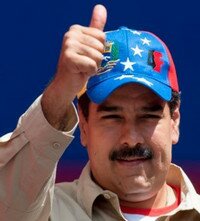 Venezuela is the most problematic country in the region. Revenues from oil and gas account for a quarter of the country's GDP and generate more than 90 % of export revenues. Therefore, due to the decline in world oil prices, the country turned out to be on the verge of default. Taking into consideration the public debt of 50 % of GDP, unstable situation in the economy and the budget deficit of 16 %, the country today is very vulnerable. Moreover, N. Maduro's government is rapidly losing support within the country (in November the level of support dropped to 24.5 %), which could lead to political instability in 2015 and a serious political crisis.
Venezuela is the most problematic country in the region. Revenues from oil and gas account for a quarter of the country's GDP and generate more than 90 % of export revenues. Therefore, due to the decline in world oil prices, the country turned out to be on the verge of default. Taking into consideration the public debt of 50 % of GDP, unstable situation in the economy and the budget deficit of 16 %, the country today is very vulnerable. Moreover, N. Maduro's government is rapidly losing support within the country (in November the level of support dropped to 24.5 %), which could lead to political instability in 2015 and a serious political crisis.
 Ecuador is also in a dire financial condition, but in this country, the risk of political instability is much lower than in Venezuela. This year, the budget deficit has amounted to about 5 %, but the government has compiled a list of measures to reduce costs. Also, the country had to adjust its budget for 2015, to take into account the new price of oil. Besides, the political situation of the country's President R. Correa is more stable. Despite this, the country is being covered with the waves of protest that could escalate into a riot.
Ecuador is also in a dire financial condition, but in this country, the risk of political instability is much lower than in Venezuela. This year, the budget deficit has amounted to about 5 %, but the government has compiled a list of measures to reduce costs. Also, the country had to adjust its budget for 2015, to take into account the new price of oil. Besides, the political situation of the country's President R. Correa is more stable. Despite this, the country is being covered with the waves of protest that could escalate into a riot.
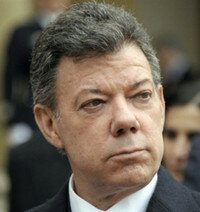 In Colombia, an important prerequisite for the stabilization of the armed conflict should become the declared on December 20 by the rebels from the Revolutionary Armed Forces of Colombia (FARC) unilateral indefinite ceasefire. Colombian President J.M. Santos (June 2014 re-elected for a second term), welcomed the decision and said that the government would discuss with the rebels of the FARC the question of bilateral truce (corresponding negotiations have been held in Havana since 2012). The peace agreement should put an end to systematic militants' attacks on oil pipelines that in 2014 caused losses of 500 million US dollars — almost as much as the country lost as a result of the decline in world oil prices (550 million US dollars). However, a complete cease-fire on both sides so far is not being discussed. Lacking confidence in the rebels, the Colombian government refuses to take this step before signing the final agreement on a ceasefire.
In Colombia, an important prerequisite for the stabilization of the armed conflict should become the declared on December 20 by the rebels from the Revolutionary Armed Forces of Colombia (FARC) unilateral indefinite ceasefire. Colombian President J.M. Santos (June 2014 re-elected for a second term), welcomed the decision and said that the government would discuss with the rebels of the FARC the question of bilateral truce (corresponding negotiations have been held in Havana since 2012). The peace agreement should put an end to systematic militants' attacks on oil pipelines that in 2014 caused losses of 500 million US dollars — almost as much as the country lost as a result of the decline in world oil prices (550 million US dollars). However, a complete cease-fire on both sides so far is not being discussed. Lacking confidence in the rebels, the Colombian government refuses to take this step before signing the final agreement on a ceasefire.
2.6 The Asia-Pacific Region
The undisputed leader of the region, China continues to pursue a pragmatic foreign policy, following only its own national interests. In particular, within the framework of this policy during 2014 the official Beijing was focusing its efforts on strengthening its positions in the world and in important for it regions, especially in the Asia-Pacific Region, Southeast and Central Asia, Europe, Africa and Latin America. Among the main directions of implementation of China leadership's foreign policy goals in 2014, should be pointed out as follows:
- Beijing's building up in the Asia-Pacific Region the intensity of so-called “unfriendly” (provocative) actions in relations with countries with which China has unresolved territorial disputes. At this, the increase in cases of the Chinese side's demonstrations of force is perceived by most countries as a unilateral Beijing's desire to change the status quo in the Asia-Pacific Region, posing a threat to peace and security in the region;
- implementation of the policy to further “voluntary-compulsory” economic rapprochement with China of states of the so-called “Second tier” of the Asia-Pacific Region, especially of South-East Asia (on favorable for Beijing terms) that artificially limits their ability to implement the strategy of rapprochement with alternative to China power centers, first of all, with the United States.
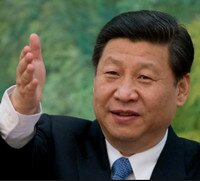 President Xi Jinping' unprecedented foreign-policy activism (in 2014 he paid state visits to Europe, South Korea, Mongolia, Central Asia, India, Brazil, Australia and New Zealand, and also held talks with leaders of the countries within the framework of major international organizations (“Big Twenty”, SCO, BRICS, ASEAN, APEC) has added to strengthening international positions and expanding China's economic presence.
President Xi Jinping' unprecedented foreign-policy activism (in 2014 he paid state visits to Europe, South Korea, Mongolia, Central Asia, India, Brazil, Australia and New Zealand, and also held talks with leaders of the countries within the framework of major international organizations (“Big Twenty”, SCO, BRICS, ASEAN, APEC) has added to strengthening international positions and expanding China's economic presence.
The official Beijing has effectively used the factor of Presidency in APEC to reduce the overall level of geopolitical tension in the region by reaching agreements with the United States on establishing a “warning mechanism” (about holding a large-scale military maneuvers) and “rules of conduct” (when military ships meet at sea or military aircrafts meet in the air). Besides, the parties have reached a breakthrough in reducing greenhouse gas emissions. The United States also agreed to remove a number of significant restrictions on trade with China in the sphere of high technologies and to simplify visa policy for Chinese businessmen, tourists and students. The Chinese side has received significant economic and technological effect from the conclusion of the China-USA agreement on reduction of tariffs on a number of technological products (semiconductors, medical equipment, GPS systems and devices). The total volume of products covered by this Agreement, reaches 1 trillion US dollars. At the same time, such actions of China have weakened potential chances of the Philippines (as the main antagonist of China in South-East Asia and in 2015 carrying out the Presidency in APEC) to block further development of last year's priorities of the Chinese Presidency in the Association. For Washington's military allies in the Asia-Pacific Region, the important result of agreements between the USA and China was an opportunity for dialogue on foreign and security policy at the highest level (taking into account the differences in the positions of the parties on the belonging of Senkaku/ Diaoyu Islands). Besides, there has been built the necessary basis for restarting the China-Japan political dialogue, as well as for the conclusion of the negotiations between China and South Korea on a free trade area.
In the European sector, one can see China's being more and more interested in deepening relations with the European Union. After the October summit of ASEM (forum “Asia-Europe”) in Milan, within the framework of a dialogue with the leadership of the European Union, China has partially modified its negotiating tactics. China's leaders have expressed great concern over the situation around the Russian-Ukrainian conflict in the context of its impact on the growth of risks of political and economic instability, not only for the region of Eastern Europe, but also for the whole world, avoiding any mention that China is against EU sanctions on Russia. Besides, the official Beijing has confirmed the absence of conflict of interests with the EU, which accompanies the process of preparation of the feasibility study agreement on free trade “EU-China”. At this, the Chinese side does not avoid informing the responsible representatives of the official Brussels on the results of discussions of the “Ukrainian question” within the framework of Xi Jinping's meetings with Putin, which fact shows that Beijing wants to develop a more substantial “basis of trust” for the development of relations with the EU.

|
|
In the face of increasing pressure from the USA/EU on Russia, in China has been formed a quite cautious attitude to relations with the Russian Federation. This is explained by the desire to avoid risks in the economic cooperation with the RF, as well as not to worsen relations with Western countries and international organizations (representing greater interest to the Chinese side than Russia does). This is evidenced by Beijing's refusal to invest and lend to the Russian gas pipeline project “The Power of Siberia”, as well as by delaying the solution of other problematic issues between Russia and China in the energy sector. Despite the strategic rapprochement with Russia and the Kremlin's launch of the process of actual reorientation of its energy potential to the PRC, the official Beijing is increasingly interested in cooperation in the energy sector with the countries of ASEAN (Association of Southeast Asian Nations). All this, combined with the significant reduction in the cost of oil on the world market, allows China to increasingly move away from the concept of “equal partnership” and to offer the Kremlin new terms of cooperation. Besides, introduction by the Chinese side of tactics of offering the Russian side mainly only tired loans, providing for targeted acquisitions of Chinese goods and services, does not allow the Russian Federation to attract Beijing's financial potential to counter the stagnation of the Russian economy caused by sanctions imposed on the RF by the West. Also remains restrained Beijing's position on extending the use of national currencies for settlement between China and Russia within the framework of export-import operations, which is a strategically important aspect of cooperation for the Kremlin. Significant differences between the Russian Federation and China were also seen within the framework of the Shanghai Cooperation Organization. While Russia was trying to use the SCO as a “counterbalance” to the USA and the EU, China continued to use the Organization as a tool to strengthen its influence in Central Asia.
Based on the PRC's leadership's policy guidelines, the main objective of the development of the country is implementation of the so-called “Chinese Dream”, which provides for such a national revival of China, which will allow it to reach the level of development of the world's leading countries and to ensure decent well-being of Chinese citizens. To do this, the leadership of China focus on process of the country's transition from the old economy model of stimulation of China's exports and capital construction projects in the country, to new principles of management, based on development of the internal market and high-tech industries. In 2014, the Chinese government took measures to stimulate the economy, for which purpose were adopted a number of financial initiatives such as subsidizing investments and exports, easing of credit debt, tax benefits. However, the government failed to resolve China's main structural problems, constituting a risk to economic growth, including excess capacity, increasing debt of local authorities and others. Also last year, the Chinese government did little for the implementation of previously planned reforming of the tax system, financial liberalization, partial restrictions on imports of foreign companies. All this has led to a slowdown in economic growth in 2014 to 7.1 %, instead of the planned 7.5 %.
Last year, the Chinese leadership's priority was to strengthen the country's defense. As part of the national military policy in the Asia-Pacific Region, China was expanded the network of military bases in its south-eastern regions, strengthened the Navy to monitor coastal seas and outlets into the Pacific and Indian Oceans. At this, against the background of China's desire for a peaceful solution to existing problems, there remain contradictions in its relations with the United States (primarily in the issues of influence on the region), tensions in its relations with India (over border areas and a number of other regional problems), as well as the potential for conflict in resolving contradictions with Japan, the Philippines and Vietnam (over disputed islands). The Chinese side continued technical re-equipment of the Army and Navy. At the same time the country's leadership is well aware that, despite the intensive growth of the defense budget of the PRC (from 100 billion US dollars in 2012 to 148 billion US dollars in 2014), the high level of corruption in the People's Liberation Army (PLA) reduces the real military potential of the country. Besides, the excessive politicization of the Army commandment, as well as opposition of representatives of the military elite, closely related to the previous generation of Chinese leaders, partly restricts at this stage Xi Jinping's ability to use the resource of the PLA.
The second half of the year reminded of the problems of ensuring internal stability of China. This refers, first of all, to overcoming the risks associated with the protest movement “Occupy Central” in Hong Kong SAR. At this, in case of taking force measures, there may appear preconditions for the loss of confidence in the national concept of “one country, two systems” in special autonomous regions of the PRC (especially in Taiwan). Remains relevant the need to strengthen state control over the population in regions with high risks of existing or potential instability (Xinjiang Uygur and Tibet Autonomous Regions, Qinghai, Gansu and Sichuan provinces).
 In the past year, territorial disputes between the APR countries got worsened, and this can lead to regional conflicts with involving into them of leading countries of the world. First of all, it concerns the mutual claims between China, the Philippines and Vietnam on belonging of disputed island territories (Paracel, Spratly, Scarborough) in the South China Sea, as well as between China and Japan on the islands (Senkaku/Diaoyu) in the East China Sea. China's actions for the construction of artificial islands near the disputed territories in the South China Sea have caused additional tension in the region. New risks have increased due to strengthening of the Chinese military presence near the Philippines and Vietnam (including the construction of new military air and naval bases). In this situation, the United States, traditionally supporting Japan and the Philippines, are carrying out activities to demonstrate force in the region through joint military trainings, which leads to additional problems in relations between the USA and China in struggle for influence in the Asia-Pacific Region.
In the past year, territorial disputes between the APR countries got worsened, and this can lead to regional conflicts with involving into them of leading countries of the world. First of all, it concerns the mutual claims between China, the Philippines and Vietnam on belonging of disputed island territories (Paracel, Spratly, Scarborough) in the South China Sea, as well as between China and Japan on the islands (Senkaku/Diaoyu) in the East China Sea. China's actions for the construction of artificial islands near the disputed territories in the South China Sea have caused additional tension in the region. New risks have increased due to strengthening of the Chinese military presence near the Philippines and Vietnam (including the construction of new military air and naval bases). In this situation, the United States, traditionally supporting Japan and the Philippines, are carrying out activities to demonstrate force in the region through joint military trainings, which leads to additional problems in relations between the USA and China in struggle for influence in the Asia-Pacific Region.
The Chinese side's holding geological exploration in the disputed offshore areas, has led to exacerbation of relationsbetween China and Vietnam. In this context, we can't help mentioning the incident with drowning a Vietnamese fishing vessel and China's placing oil drilling platforms with warships brought near the disputed islands. At the same time, probability of a full-scale war between the two countries is negligible. First of all, because of strong economic relations (China is Vietnam's largest trading partner with an annual turnover of 50 billion US dollars). In case of escalation of the China-Vietnam conflict, Hanoi will have to seek assistance of third countries, in particular, of the United States and Japan — China's main rivals in the region. Unlike Russia, the United States, recently carrying out extensive economic and military-technical expansion in Vietnam, but not wanting to risk its relations with Beijing, has expressed its readiness to support the countries of the region in territorial disputes with China, both legally and by its military presence.
In general, the development of the security situation in the region will be influenced by many factors, the main ones being as follows:
- maintenance of the US military presence in the Pacific as part of the policy of “containment of China”. The US government has started the construction of a naval base in Singapore and the negotiation process with Vietnam on a strategic partnership. Besides, it is discussing with South Korea a possible return of tactical nuclear weapons to the Peninsula. At the same time, the USA will use seismic, sonar and infrared observation stations (located in Australia, New Zealand and Japan) for monitoring strategic nuclear forces of the PRC;
- China's attempts to gradually upgrade its nuclear forces through development of new intercontinental ballistic missiles with modern systems to overcome Missile Defense, as well as construction of a new type of nuclear-powered submarines. At the same time, without Russia's technological assistance, China is not able to fulfill the above-mentioned tasks;
- the impact of the situation on the Korean Peninsula on Japan's military policy. In particular, because of the missile threat from North Korea, Japan has acquired new US Missile Defense systems, the use of which may be considered a precedent for Japan's using weapons outside the archipelago;
- uncertainty in the region on issues of nuclear proliferation. Thus, the governments of South Korea and Japan may make a decision to withdraw from the Nuclear Non-Proliferation Treaty and to begin development of their own nuclear weapons, despite the dissatisfaction of the United States. At this, the theoretical and practical potential allows both sides to begin developments in this sphere.
2.7 Africa
In the face of rising competition between the USA and China for global domination and redistribution of spheres of influence, there is a high probability of sharp conflicts in the resource-rich African continent. Wars and armed conflicts in Africa have complex causes, including both economic-resource, and national-ethnic, territorial, socio-political and religious disagreements. The weak economic situation of African countries, their limited financial capacity and permanent political instability lead to social challenges, amplified by high rates of population growth, poverty, hunger, epidemic threats, competition for water resources and uncontrolled migration due to the transparency of borders. In the context of rapid urbanization this leads to marginalization of the population, increase in the crime situation, growth of smuggling and illegal shipments of weapons and drugs.
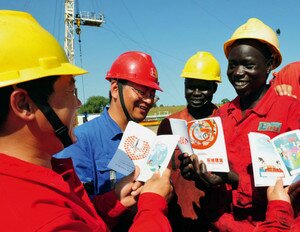 Despite the fact that the African continent is a traditional area of political and economic interests of France, the UK and the USA, China in recent years has been paying particular attention to the region, and especially because of the presence there of a large number of natural resources (especially oil) it needs. China is actively developing economic cooperation with African countries; the volume of Chinese investment project in the African countries reaches tens of billions of dollars. The total volume of African countries' trade with China is more than 210 billion US dollars, which is higher than trade with the European Union (200 billion US dollars) or with USA (60 billion US dollars).
Despite the fact that the African continent is a traditional area of political and economic interests of France, the UK and the USA, China in recent years has been paying particular attention to the region, and especially because of the presence there of a large number of natural resources (especially oil) it needs. China is actively developing economic cooperation with African countries; the volume of Chinese investment project in the African countries reaches tens of billions of dollars. The total volume of African countries' trade with China is more than 210 billion US dollars, which is higher than trade with the European Union (200 billion US dollars) or with USA (60 billion US dollars).
China significantly supports countries of the region, defending their interests in the UN and other international organizations, actively participates in peacekeeping activities in the settlement of some conflicts (especially in Sudan's Darfur region), and as part of military contingents of the United Nations. At present, China's “blue helmets” in Africa number about 1.8 thousand people (in Western Sahara, Mali, Congo, Liberia, Côte d'Ivoire, Sudan). At this, China's military presence is reduced mainly to military cooperation with African countries in matters such as training and logistical support. At the same time, China is supplying weapons to a number of African regimes. Thus, according to the US Congress, the PRC in recent years has sold to African countries a volume of arms worth 600 million US dollars.
Growing China's exports of African raw materials are forcing the USA to lead in relation to countries of the region a more active policy to defend its own economic interests. Strengthening of the established in 2008 Joint Command of the Armed Forces of the United States in the African zone, including territories of 53 countries, continues. Besides, an important tool for spreading of American influence and control is programs for military assistance to African countries, in particular within the framework of the International Military Education and Training programs.
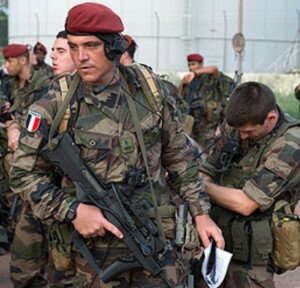 France has concentrated its efforts on ensuring of French companies' access to development of oil and gas fields, as well as on promotion of products of its own military-industrial complex to African markets. Despite the gradual reduction of the military presence in Africa from 8 to 5 thousand military servicemen (under the policy for reduction of military spending), French military bases are located in Senegal, Gabon, Côte d'Ivoire, Chad, Burkina Faso, Nigeria, Central African Republic (CAR) and Djibouti. At this, the direct military intervention of the French Armed Forces into the internal conflict in Côte d'Ivoire, as well as the military operation to liberate Mali and the Central African Republic from Islamic extremists indicate the willingness of Paris to defend its foreign policy interests in the African region by any means, including force. Besides, the features of internal political processes in the countries of West and Central Africa in recent years, have been giving France an additional opportunity to successfully realize the strategy of “return to Africa”.
France has concentrated its efforts on ensuring of French companies' access to development of oil and gas fields, as well as on promotion of products of its own military-industrial complex to African markets. Despite the gradual reduction of the military presence in Africa from 8 to 5 thousand military servicemen (under the policy for reduction of military spending), French military bases are located in Senegal, Gabon, Côte d'Ivoire, Chad, Burkina Faso, Nigeria, Central African Republic (CAR) and Djibouti. At this, the direct military intervention of the French Armed Forces into the internal conflict in Côte d'Ivoire, as well as the military operation to liberate Mali and the Central African Republic from Islamic extremists indicate the willingness of Paris to defend its foreign policy interests in the African region by any means, including force. Besides, the features of internal political processes in the countries of West and Central Africa in recent years, have been giving France an additional opportunity to successfully realize the strategy of “return to Africa”.
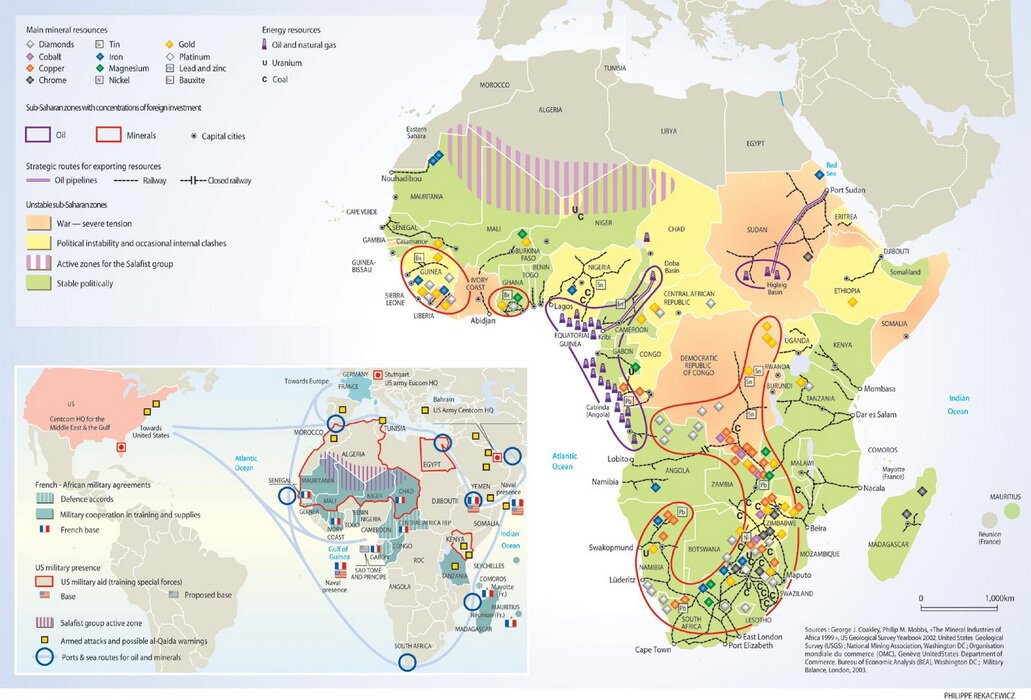 The influence on African countries of financial and banking capital of the leading Islamic countries is growing, which leads to further increased competition on the continent. Thus, we should point out the intensification of economic cooperation between the countries of the Persian Gulf, Turkey and African states that have significant mineral resource base and a significant portion of the Muslim population.
The influence on African countries of financial and banking capital of the leading Islamic countries is growing, which leads to further increased competition on the continent. Thus, we should point out the intensification of economic cooperation between the countries of the Persian Gulf, Turkey and African states that have significant mineral resource base and a significant portion of the Muslim population.
Besides, for the vast majority of countries of the region, extremely urgent is the issue of further keeping under control the inflation processes, caused by the reduction in export volumes. This trend demands from African countries to make significant foreign exchange interventions. Given the shortage of foreign exchange reserves, this leads to international donors and large transnational companies' key influence on the state of their economies. As a consequence, global players' attempts to gain access to Africa's natural resources increase tensions, lead to an escalation of the ongoing and emergence of new armed conflicts in the region.
 In particular, in 2014, there continued an armed conflict between Sudan and South Sudan, conflicts in Libya, Western Sahara, Mali, Niger, Nigeria, Chad, Liberia, Côte d'Ivoire, Guinea-Bissau, the Central African Republic, in eastern provinces of the Democratic Republic of the Congo (DRC) and in the Great Lakes region, Somalia and Kenya. One of the most serious threats to international security and security in Africa constitute terrorist organizations, strengthening their presence on the continent. “Al-Qaeda” has got intensified in the north of the countries of Islamic Maghreb, “Boko Haram” — in the west of the continent (Nigeria and Cameroon), “Al-Shabaab” — in the east in the area of the Horn of Africa (Somalia and Kenya). There is a sharp problem of foreign fighters and mercenaries as part of terrorist groups, in which there are several thousand foreigners. To date, 22 African countries are the target of terrorist violence.
In particular, in 2014, there continued an armed conflict between Sudan and South Sudan, conflicts in Libya, Western Sahara, Mali, Niger, Nigeria, Chad, Liberia, Côte d'Ivoire, Guinea-Bissau, the Central African Republic, in eastern provinces of the Democratic Republic of the Congo (DRC) and in the Great Lakes region, Somalia and Kenya. One of the most serious threats to international security and security in Africa constitute terrorist organizations, strengthening their presence on the continent. “Al-Qaeda” has got intensified in the north of the countries of Islamic Maghreb, “Boko Haram” — in the west of the continent (Nigeria and Cameroon), “Al-Shabaab” — in the east in the area of the Horn of Africa (Somalia and Kenya). There is a sharp problem of foreign fighters and mercenaries as part of terrorist groups, in which there are several thousand foreigners. To date, 22 African countries are the target of terrorist violence.
|
|
In May 2014, the civil war in Libya began. Libyan Army General Kh. Haftar at the head of troops under his control confronted groupings of Islamists in Benghazi, having accused Prime Minister A. Maytyg of supporting militants. Against him were pro-government militias. Fights moved to Tripoli and other cities. The military crisis in Libya is accompanied by the political one — the Prime Minister has been removed from his post, diplomatic missions of foreign states have left the country. At present, it is already possible to state that the Libyan leadership which emerged after Gaddafi's overthrow is unable to keep the country under control. Absence of a legitimate state authority, confrontation of armed groups competing on the basis of a variety of ethnic and tribal conflict, lead to disintegration of the state. Besides, Libya has become a haven for radical Islamist movements, using the collapse of the state and internal conflicts to strengthen their own positions and to raise separatist sentiments in the region.
In Sudan and South Sudan there continued arguments for access to oil fields, armed attacks against UN bases, rebel groups were very active, tribal conflicts did not stop. Clashes between government forces and forces of the rebel leader, former vice-president R. Ma'shar, began in December 2013, when the rebels within two to three weeks captured several towns. In the course of negotiations between the parties in August last year an agreement was reached on the division of power, which, however, did not put an end to the conflict. According to the UN, since the start of fighting, at least 10 thousand people were killed, 1.8 million had to flee their homes, more than 5 million — are in need of humanitarian aid. In November 2014 the UN Security Council extended the mandate of the UN Mission in the Republic of South Sudan (UNMISS) for another six months.
In 2014, in Somalia, the war continued with Islamist movement “Al-Shabaab”, closely associated with “al-Qaeda”. The country has virtually no functioning central government and militants in recent years constantly arrange attacks in different districts of country, in the capital included. Military forces of the African Union, whose number in Somalia reaches 22 thousand people, help Somalian military in fighting Islamists. Besides, the rebels attack the territory of neighboring Kenya, whose troops are presented in the contingent of the African Union.
In the Democratic Republic of the Congo situation has worsened as a result of the armed conflict between the government forces and illegal armed groups in the east of the country and due to complications of the sanitary-epidemiological situation in the Congolese territory.
In Côte d'Ivoire continue the activities of armed militias and criminal gangs as a result of the unsettled situation on the border with Liberia.
In Nigeria for many years continues religious conflict between Muslims and Christians. After the Islamist organization “Boko Haram’s” stepping up, the conflict has got escalated (in particular, “Boko Haram” has expanded the geography of attacks from the north-east to the south of the country). In April, militants kidnapped a group of 200 schoolgirls of one of the schools, in April-May a series of explosions shook the country, in August the grouping announced “Caliphate” on its controlled territories, in November there were several explosions at a mosque in Kano. In November alone, 786 people, mostly civilians, became victims of jihadists in Nigeria. The government, trying to fight the group, is assisted in this by neighboring states. However, this struggle is complicated by the lack of funds, poor governance and transparency of borders. There is a risk of further growth of the confrontation, including in view of the preparations for presidential elections in 2015.
In the north of Mali in late 2014 (despite the progress of negotiations in Algiers), the situation in the security sphere deteriorated due to activation of deliberate attacks against UN peacekeepers and citizens living along the border with Niger.
The Central African Republic for already more than a year cannot recover after the coup, when the Islamist group “Seleka” overthrew the regime of the President of the country (who, in his turn, came to power in a coup in 2003). In the country does not stop violence against the civilian population, bloody clashes on religious grounds. During the year, there were constant skirmishes of the “Seleka” group with “Anti-Balaka” Christian militias. Both sides acted with extreme cruelty. Thus, in early February, 75 people were killed in clashes in Boda. In September 2014 the peacekeeping mandate of the African military mission in that country was transferred to the UN Stabilization Mission in the Central African Republic (MINUSCA).
The situation in the region is getting worse even more due to the difficult economic and political situation in the Republic of South Africa (South Africa), dual military coup in Burkina Faso (October-November), attempted military mutiny in Lesotho(August), exacerbation of territorial disputes in the West African countries (first of all, in Sierra Leone, Liberia, Guinea and Nigeria). The escalating military-political threats, growth of ethnic and religious conflicts, humanitarian problems on the continent are added to by a new epidemiological challenge in the form of outbreaks of Ebola.
In 2014, were intensified activities of the international community to unite efforts of African countries to resolve conflicts in Africa and to counteract terrorism. In this context, the African Union Summit, held in June 2014 in Malabo (Equatorial Guinea), was very important. The Summit participants supported the establishment of the African Crisis Response Force for further formation of the African High-Readiness Force. To counteract the group “Boko Haram,” in May 2014 in Paris, representatives of a number of countries (Benin, Cameroon, Niger, Nigeria, Chad, USA, France, Great Britain) agreed on a joint plan to coordinate actions in matters of intelligence, information sharing, centralized management of forces and means, monitoring of borders, ability to intervene in case of any danger.
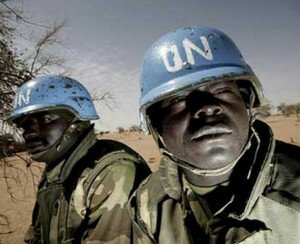
|
|
Besides, to date in Africa, nine active UN peacekeeping operations are being carried out. UN peacekeepers are serving within the contingents in Sudan's province Darfur (together with the forces of the African Union), Sudanese town of Abyei and in Southern Sudan, Western Sahara, Mali, Liberia, Côte d'Ivoire, CAR and DRC. The special political mission of the UN in Libya and African Union's forces in Somalia contribute to stabilization of conflicts.
Important factors of risk for African countries today are also:
- lack of investments into human capital and a low literacy rate. Thus, according to UNESCO's forecasts, in Africa will soon live up to 50 % of the world's illiterate population;
- autocratic leadership style in leading oil producing countries (Angola, Nigeria, DRC, Equatorial Guinea, Gabon, Chad, Cameroon) and long periods stay in power of their leaders;
- forthcoming presidential elections in Nigeria, DRC and Uganda, parliamentary elections in Tanzania and South Africa. Particular threat is the risk of an escalation of instability because of Uganda (Yoweri Museveni) and the DRC (Joseph Kabila's) leaders' desire to be re-elected;
- infrastructural problems, especially in the energy sector. At the same time, countries such as Kenya, Tanzania, Nigeria, Ghana, South Africa and Ethiopia have made significant progress in the development of sectors of renewable and non-renewable energy sources. Thus, according to forecasts of the African Development Bank, the development of infrastructure in some countries of the region indicates political intentions of the leaders of the continent to develop economic cooperation between states, and regional integration in Africa is called “the basis of the next decade's strategy”;
- reduction in world prices and demand for budget-forming for African countries kinds of raw materials, primarily for oil and minerals;
- sharp fluctuations in food prices due to adverse weather conditions and devaluation of national currencies.
Overcoming an extremely high potential for conflict in African countries is only possible by addressing priorities such as industrialization of the continent, reform of the agricultural sector, raising the role of civil society, ensuring gender equality and respect for human rights, getting rid of poverty, struggle against climate change, prevention of infectious diseases, ensuring access to quality education and medicine, energy sources, food and drinking water.
2.8 The Arctic
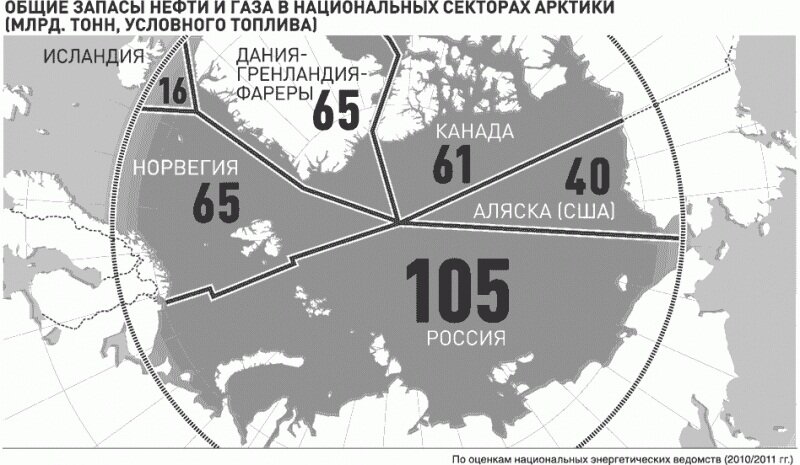 Rich natural resources of the Arctic and simplifying conditions of access to them explain the leading countries' great attention to this region. The emergence of new technologies and exploration and production of hydrocarbons, and global climate change in recent years (especially melting of the Arctic ice) have opened shipping lines, allowing to extract minerals on the ocean floor. According to experts, there are more than 15 % of oil, 30 % of natural gas and 20 % of the world's undiscovered gas condensates resources there. This explains the struggle for the right to develop them. But it has given rise to new challenges in the security sphere, because it revealed the vulnerability of round-Arctic states, which used to believe that their northern borders were safe.
Rich natural resources of the Arctic and simplifying conditions of access to them explain the leading countries' great attention to this region. The emergence of new technologies and exploration and production of hydrocarbons, and global climate change in recent years (especially melting of the Arctic ice) have opened shipping lines, allowing to extract minerals on the ocean floor. According to experts, there are more than 15 % of oil, 30 % of natural gas and 20 % of the world's undiscovered gas condensates resources there. This explains the struggle for the right to develop them. But it has given rise to new challenges in the security sphere, because it revealed the vulnerability of round-Arctic states, which used to believe that their northern borders were safe.

 The most active position in the region is that of the Russian Federation, sticking to the variant of so-called “sector” partition of the Arctic. Russia has been actively pursuing a range of organizational, scientific and technical activities lately in an attempt to secure the Arctic shelf, which runs from its coast to the North Pole, to itself. Moscow has begun in the Arctic construction work, trying to prove that Russia is still the leading power in the region. 10 search and rescue stations and 16 deep-water ports are being built on the Arctic coast. On the Russian islands in the Arctic in a large volume is being done work on the construction of military infrastructure — 13 airfields, aircraft range and 10 technical positions for radar branches and points of aviation guiding. All the works are being done at a fast pace and are scheduled for completion by the end of 2015. At the same time in the Arctic zone in December 2014, began operating a new Joint Strategic Command “North” of the RF Armed Forces. The Command was established on the basis of the Northern Fleet (with the transfer of a number of formations and units from the Central and Eastern Military Districts) to ensure the continued Russian military presence in the region. Groups of forces of the new Command have already been formed on island territories of Russia in the Arctic, including in Novaya Zemlya, the New Siberian Islands, Wrangel Island, as well as at Cape Schmidt. Defending Russian interests in the Arctic is also reflected in the provisions of the new military doctrine, adopted at the end of last year, where for the first time appear articles on securing the Russian Federation's interests in the Arctic.
The most active position in the region is that of the Russian Federation, sticking to the variant of so-called “sector” partition of the Arctic. Russia has been actively pursuing a range of organizational, scientific and technical activities lately in an attempt to secure the Arctic shelf, which runs from its coast to the North Pole, to itself. Moscow has begun in the Arctic construction work, trying to prove that Russia is still the leading power in the region. 10 search and rescue stations and 16 deep-water ports are being built on the Arctic coast. On the Russian islands in the Arctic in a large volume is being done work on the construction of military infrastructure — 13 airfields, aircraft range and 10 technical positions for radar branches and points of aviation guiding. All the works are being done at a fast pace and are scheduled for completion by the end of 2015. At the same time in the Arctic zone in December 2014, began operating a new Joint Strategic Command “North” of the RF Armed Forces. The Command was established on the basis of the Northern Fleet (with the transfer of a number of formations and units from the Central and Eastern Military Districts) to ensure the continued Russian military presence in the region. Groups of forces of the new Command have already been formed on island territories of Russia in the Arctic, including in Novaya Zemlya, the New Siberian Islands, Wrangel Island, as well as at Cape Schmidt. Defending Russian interests in the Arctic is also reflected in the provisions of the new military doctrine, adopted at the end of last year, where for the first time appear articles on securing the Russian Federation's interests in the Arctic.
The leadership of the United States of America does not accept the “sector” version of demarcation of the Arctic. Washington counts on the area stretching for 600 nautical miles from Alaska to the North Pole. At this, according to the United States, at the North Pole should be formed “no man's land” area of about 3 million square kilometers, where natural resources could be used by all subjects of international relations. The USA does not recognize Russia's claims to a number of shelves and to the Northern Sea Route either. In 2014, the United States continued implementation of the previously adopted National Arctic strategy which suggests activation of actions for development of natural resources, working out and adoption of an appropriate legal basis. But the US government considers the Arctic, first of all, through the prism of its economic, not geopolitical interests. Today, the US is acting more within the framework of diplomatic processes, not focusing on the question of creation of a separate Arctic group of forces.
Canada also aims at strengthening its positions in the Arctic. Threats to its interests in the Arctic regions are considered by Canada mainly in the plane of the existing territorial disputes with the USA, Denmark and Russia. Canadian Armed Forces are constantly taking part in trainings in the Arctic. The basis of the country's Arctic Forces is garrisons of rangers patrolling the most remote northern areas.
As part of the Arctic Council, other Arctic countries — Norway, Denmark, Sweden, Finland and Iceland — also defend their interests in the region. However, during the existence of the Council its participants have not come to a consensus about the borders in the Arctic and the spread of sovereignty over the offshore areas and the open ocean.
China also pays attention to the Arctic, having started creating its own Arctic icebreaking fleet. It is interested in access to the Russian Northern Sea Route. Other countries, such as South Korea and Malaysia, also show their being really interested in the Arctic.
2.9 Other factors of influence on the world and regional processes
Armed conflicts, international terrorism and extremism, cyber crime in 2014 were sources of threats to the global and regional levels. A separate challenge to the entire international community has become Ebola outbreak in West Africa. In 2014, in the world were unleashed at least two major military conflicts — in the east of Ukraine and in Libya. On the border of Iraq and Syria was formed a new “Islamic State”, the Syrian conflict continued, and so did some others. Besides, there are many so-called “frozen” conflicts in the world.
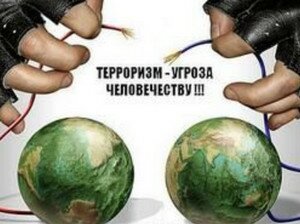 International terrorism in recent years has expanded geographically; therefore, a number of victims of terrorist attacks keeps growing annually. Noticeable terrorist activity was observed in Nigeria, Iraq, Syria and Pakistan. Major terrorist attacks occurred in India, France, CAR, DRC, Kenya, Yemen and Egypt. The main motive of terrorism in Africa, the Middle East and South Asia remains a religious ideology based on an extremist interpretation of Wahhabism (radical Islam). In other regions, terrorism often is caused by political or nationalist motives. Responsible for most attacks lies on radical groups — “Islamic State”, “Jabhat al-Nusra” Front, “Taliban”, “Boko Haram” and “Al Qaeda.”
International terrorism in recent years has expanded geographically; therefore, a number of victims of terrorist attacks keeps growing annually. Noticeable terrorist activity was observed in Nigeria, Iraq, Syria and Pakistan. Major terrorist attacks occurred in India, France, CAR, DRC, Kenya, Yemen and Egypt. The main motive of terrorism in Africa, the Middle East and South Asia remains a religious ideology based on an extremist interpretation of Wahhabism (radical Islam). In other regions, terrorism often is caused by political or nationalist motives. Responsible for most attacks lies on radical groups — “Islamic State”, “Jabhat al-Nusra” Front, “Taliban”, “Boko Haram” and “Al Qaeda.”
 Cybercrimes have gained a clear international dimension. The most massive in 2014 remained the financial cybercrime — targeted attacks on banking, payment systems, credit cards and ATMs (leakage of banking and payment data, misappropriation of funds). Actively continued cyber attacks, spread of malicious viruses, hacking of networks, programs, passwords and so on. However, over the past year information cybercrime got intensified: leakage (theft) of personal data, government and military documents, spread of illegal information (knowingly false information, materials that incite ethnic and religious hatred, and so on). Especially dangerous are the more and more frequent attacks of “cyber-jihadists” from “IS”. Cybercrime harms trade, competition, innovations, and, consequently, economic growth. Cybercrime's scale has grown. According to various estimates, the world economy's losses from the crimes committed via the Internet, have reached 400 billion per year, or about 0.5 % of the world GDP, which is already close to the 0.9 % made by illegal drug trafficking. At this, it is practically impossible to estimate security, reputation and other losses.
Cybercrimes have gained a clear international dimension. The most massive in 2014 remained the financial cybercrime — targeted attacks on banking, payment systems, credit cards and ATMs (leakage of banking and payment data, misappropriation of funds). Actively continued cyber attacks, spread of malicious viruses, hacking of networks, programs, passwords and so on. However, over the past year information cybercrime got intensified: leakage (theft) of personal data, government and military documents, spread of illegal information (knowingly false information, materials that incite ethnic and religious hatred, and so on). Especially dangerous are the more and more frequent attacks of “cyber-jihadists” from “IS”. Cybercrime harms trade, competition, innovations, and, consequently, economic growth. Cybercrime's scale has grown. According to various estimates, the world economy's losses from the crimes committed via the Internet, have reached 400 billion per year, or about 0.5 % of the world GDP, which is already close to the 0.9 % made by illegal drug trafficking. At this, it is practically impossible to estimate security, reputation and other losses.
Ebola epidemic
 In March 2014 in Guinea, West Africa, the first cases of infection with Ebola hemorrhagic fever became known (though, the first cases began in December 2013). The outbreak of the largest in the history epidemic fever has become a real epidemiological challenge for the entire world community. Cases of infection have also been diagnosed in Sierra Leone, Liberia and Nigeria. Later such cases were reported in other countries-the Congo, Senegal, Ghana, and Mali. The virus moved beyond West Africa, some representatives of Spain and the United States turned out to be infected. According to the World Health Organization (WHO), the number of cases of Ebola in the West Africa has exceeded 21 thousand people; more than 8.4 thousand people have already died of the fever.
In March 2014 in Guinea, West Africa, the first cases of infection with Ebola hemorrhagic fever became known (though, the first cases began in December 2013). The outbreak of the largest in the history epidemic fever has become a real epidemiological challenge for the entire world community. Cases of infection have also been diagnosed in Sierra Leone, Liberia and Nigeria. Later such cases were reported in other countries-the Congo, Senegal, Ghana, and Mali. The virus moved beyond West Africa, some representatives of Spain and the United States turned out to be infected. According to the World Health Organization (WHO), the number of cases of Ebola in the West Africa has exceeded 21 thousand people; more than 8.4 thousand people have already died of the fever.
Within the framework of the United Nations was formed a global coalition to coordinate efforts to fight the epidemic.
Apart from this, a special UN Mission for Ebola Emergency Response (UNMEER) was created with headquarters in Accra (Republic of Ghana). It was instructed to stop the epidemic, cure the infected, provide basic medical services, stabilize the situation and prevent future outbreaks. United Nations, European Union, WHO, several leading countries and international organizations are active in providing humanitarian and financial assistance to countries which suffered from Ebola (mobile laboratories, medical equipment, disinfectants, clothes for medical personnel, etc.) and give their professionals and medical grounds for fighting the virus.
WHO experts describe three scenarios in which the situation can go in the future. The first assumes that measures to control the epidemic have not been implemented in an expeditious manner, the increase in the incidence of transmission of the virus continues, and the number of cases equals tens of thousands. Second — if responded to successfully, Ebola ceases to circulate among the population of West Africa, while remaining within its natural reservoirs. According to the third scenario (intermediate between the first two), the measures are semi-effective and the disease caused by the Ebola virus becomes endemic in West Africa. The European Commission and WHO believe that the epidemic in Africa, caused by Ebola virus, will continue in 2015. According to the Center for Disease Control and Prevention at the US Department of Health and Human Services, the data published by the WHO are approximately 2.5 times lower than they are in reality. WHO expects that the number of cases of the disease caused by the Ebola virus, may reach 500 thousand to 1.4 million people.
To be continued…


